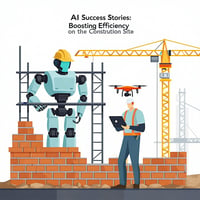Introduction Despite the historically slow pace of technological adoption in construction,...
Why Operator Speed and Manager Proof Collide, and Derail Compliance
Operators optimise for speed. Managers optimise for evidence. Between those two truths sits one of the major causes of compliance failure, and most organisations don’t even realise it’s happening.

Spend any time on a construction site, in a warehouse, on a rail job, or in a logistics hub, and one thing becomes immediately clear: everything revolves around a tight schedule. Operators are under pressure to keep projects moving forward, which means they must adapt quickly, react calmly, and maintain momentum.
Meanwhile, in the office, managers are responsible for documentation: ensuring inspections are completed on time, keeping documents up to date, ensuring risk assessments are signed, incidents are properly logged, and legal duties are reviewed. Their success depends not on speed, but on proof.
These responsibilities determine whether an organisation stays compliant, avoids fines, wins contracts, and passes audits. But the truth is, the systems designed to help managers get the evidence they need often make it harder for operators to do their jobs.
And that’s where the collision begins.
For an operator, stopping to fill out a long form, type detailed notes, or navigate a slow app feels like an interruption. Complex workflows that are intended to capture rich evidence become bottlenecks, and desktop-first interfaces don’t translate to mobile. Many tools weren’t designed for the pace of real work. And when people feel pressured, they find shortcuts such as verbal communication, WhatsApp messages, and their memory.
Managers, however, carry the weight of accountability. When a regulator visits, when a client asks for documentation, when an incident occurs, when a certificate expires, they’re the ones expected to produce clear, auditable proof.
If that proof isn’t there, the consequences are theirs to absorb.
Why Traditional Systems Make the Problem Worse
Most compliance tools assume operators have time. The time to type, time to search for the correct form, time to upload documents, time to navigate menus, time to complete long checklists, time to re-enter information that already exists elsewhere.
They don't have the time, so steps are skipped and workflows are avoided.
This is how organisations end up firefighting: chasing paperwork, rebuilding timelines, and scrambling for audit readiness at the last minute. It’s not because people don’t care. It’s because the system makes compliance difficult and time-consuming.
The Fix: Make Compliance Faster Than the Shortcut
The only sustainable solution is a system designed for both sides of the gap. That means workflows that are quick, intuitive, photo-first, auto-filled, and effortless, while simultaneously building the depth of evidence managers need.
When capturing evidence takes seconds, not minutes, operators stop resisting. When evidence updates itself, managers stop chasing. When both sides get what they need without sacrificing time or detail, the gap closes.
When the gap closes, compliance becomes predictable instead of reactive. Audits are no longer scavenger hunts, and managers can be strategic rather than reactive. Operators become contributors, and the systems no longer slow down projects. The entire organisation starts to move as one.
The Bottom Line
Compliance doesn’t fail because teams are careless. It fails because the tools they’ve been given ask them to work in a way that doesn’t match reality.
When compliance is faster than the shortcut and evidence builds in the background, the two realities finally align. That’s when organisations become safer, stronger, and more trustworthy, not because of more rules, but because the right behaviours become the easiest ones to follow.
Ready to See How LogiDocs Closes the Compliance Gap? Complete the form below, and we'll be in touch.



